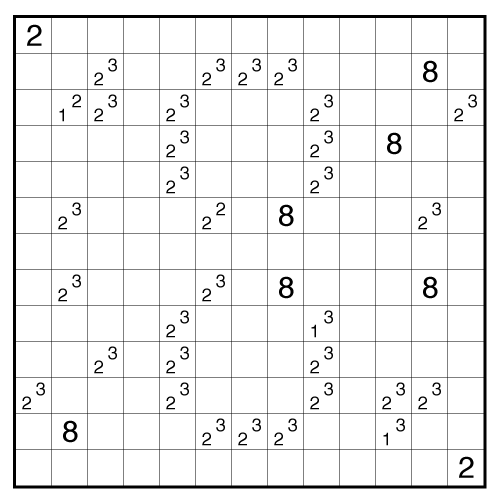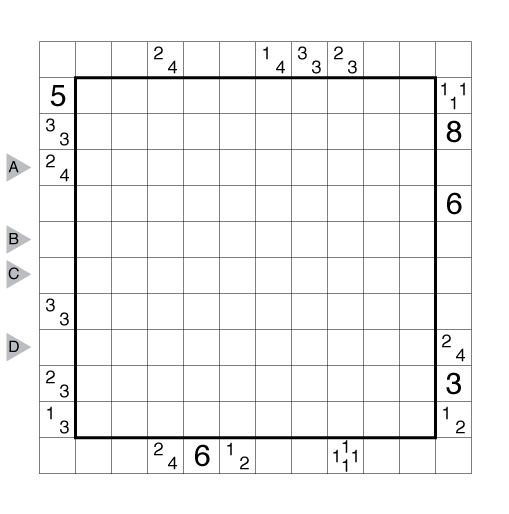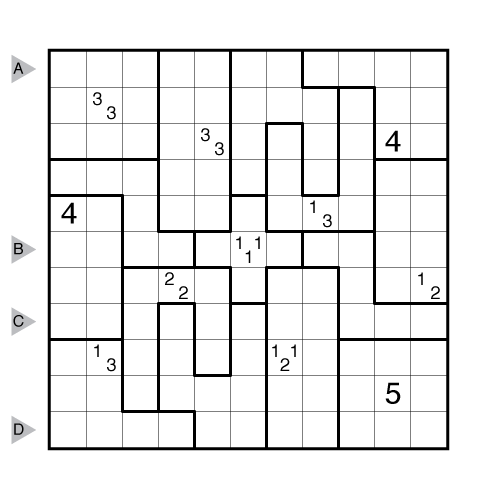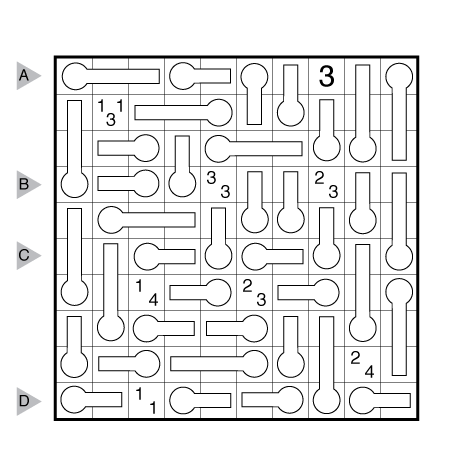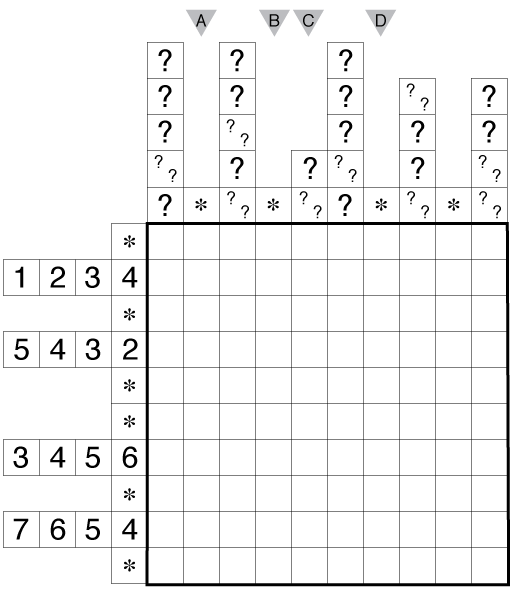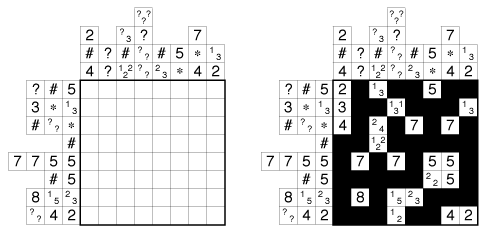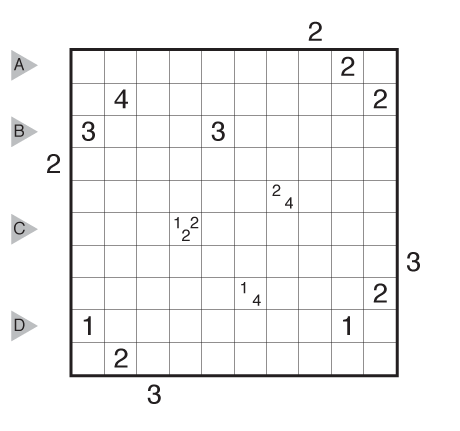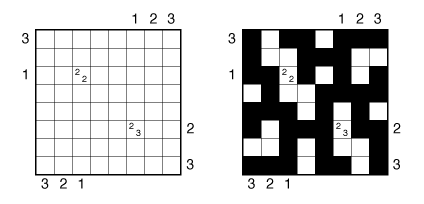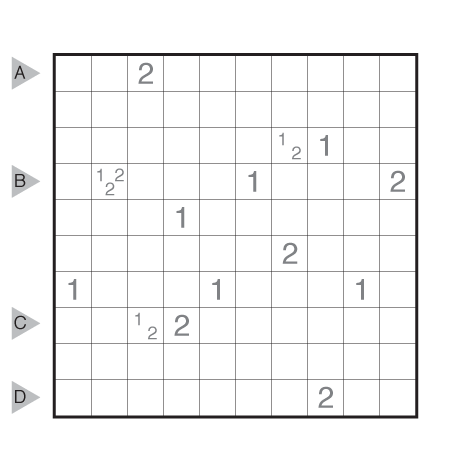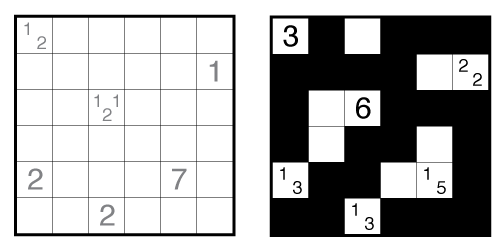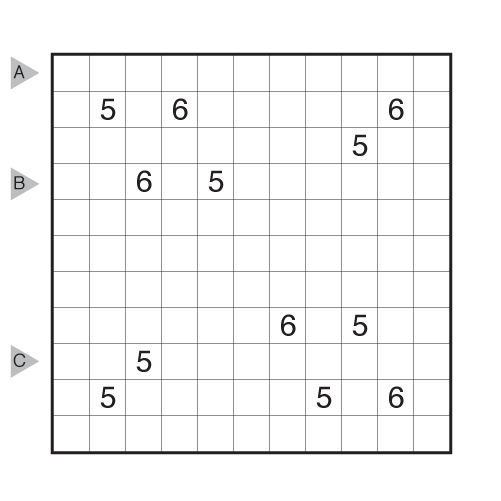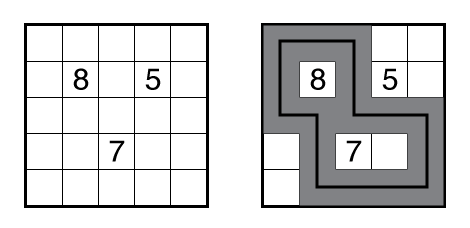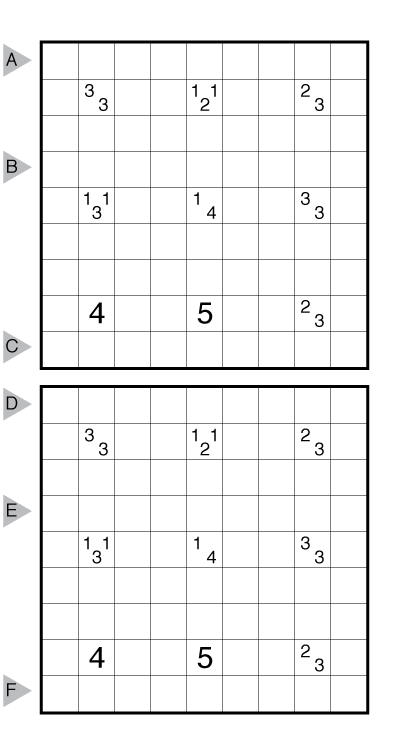Tapa (Islands) by Murat Can Tonta
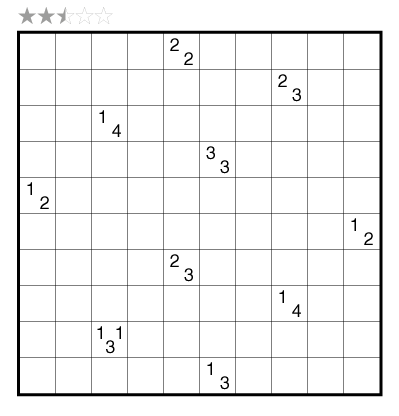
or solve online (using our beta test of Penpa-Edit tools; use tab to shift between shading mode and the composite Yajilin mode where left click marks cells, right click marks dots in cells or X’s on edges, left click+drag draws lines.)
Theme: Illusion of Choice
Author/Opus: This is the 169th puzzle from our contributing puzzlemaster Murat Can Tonta.
Rules: Standard Tapa rules. Also, similar to Nurikabe, each clue cell is part of an island of horizontally and vertically connected white cells. Islands are allowed to touch diagonally. Islands may contain at most one clue cell, and the area of the island must be one of the numbers in the clue (as an example, if a clue is 15, then the island containing that clue must be either 1 cell or 5 cells large).
See also this example:
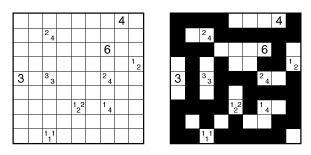
Difficulty: 2.5 stars
Time Standards (highlight to view): Grandmaster = 2:00, Master = 5:30, Expert = 11:00
Solution: PDF
Note: Follow this link for classic Tapa and this link for Tapa variations. If you are new to this puzzle type, here are our easiest Tapa puzzles to get started on. More Tapa puzzles can be found in The Art of Puzzles, in Tapa and Variations, and in our beginner-friendly collection Intro to GMPuzzles, all by Serkan Yürekli.

